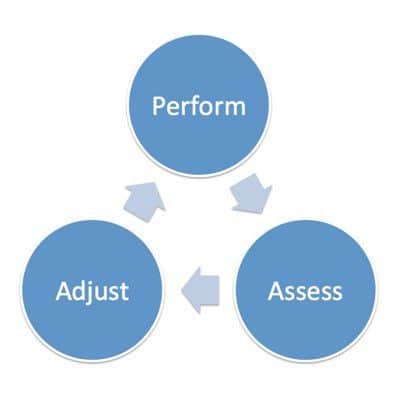I was having a conversation recently with one of the big league baseball pitchers that I work with in the offseason that I thought would be worth sharing. As we were working on his arm care program and laying out the start of his long toss program, we started to discuss how far he should attempt to throw. In the past, he had only thrown to somewhere in the 120-180 foot range (kids, take note of this, you can make it to the big leagues by only throwing to 180 feet in the offseason…), but he had been hearing about all the trendy long toss programs that have you throw to 300+ feet.
My reply was a less than convincing, “it depends,” as I strongly feel the need to individualize each pitcher’s programs. However, I casually reminded him that he threw pretty hard and was already in Major League Baseball. Not just professional baseball, but he is actually a big leaguer.
“Sure, I throw hard, but what if I could throw harder,” was his response! I agreed, but stated “OK, but at what consequence.”
The Minimum Viable Product
This led us to the concept of the “minimum viable product.”
Those in the business world have surely heard of the concept of the “minimum viable product.” A minimum viable product is a product with the least amount of features that can be released. Think of it as a bare bones product. In the lean manufacturing business model, this minimum viable product approach has numerous advantages that center around the concept of assessing the product and making adjustments along the way rather than making a huge gamble and finding out you were off base. If you put all your eggs in one basket and the product fails, you are in trouble as you have put considerable time, energy, and money into this product.
Wow, what a parallel between the business world and the rehab and performance world! We both thrive on assessing and adjusting! How many times have I said that before (many)!
In the business world this could be the difference between succeeding and going out of business.
In our world, this could be the difference between enhancing performance and creating an injury.
The Minimum Viable Exercise
This is where the “minimum viable exercise” comes into play. A minimum viable exercises is an exercises that is the least intensive that still elicits the desired effect. Ok, yes, I just made that up, but that is how I would define minimum viable exercise.
To enhance performance and minimize injury, select an exercise that is the least intensive that still elicits the desired training effect. [Click to Tweet]
Using long toss as the “exercise” example and velocity as our desired “effect,” I would want you to throw as far as you need to increase velocity, and no more. It isn’t always a “more is better” approach. I can’t help but think of the classic Jerry Seinfeld joke about maximum strength medications where he states “Give me the maximum strength. Figure out what will kill me and then back it off a little bit.”
This concept also applies to throwing with weighted balls, but I would say applies even more to throwing all year round. Many baseball coaches feel that taking time off from throwing in the offseason is a missed opportunity to improve, despite statistical research showing that injuries increased 5x by pitching for more than 8 months out of the year! We are often times too far along towards the “maximum strength exercise” rather than the “minimum viable exercise.”
When it comes to our original discussion about long toss distance, there are two ways of implementing. One would be to simply jump into a long toss program to 300+ feet with the hope of increasing velocity (and not getting injured). The minimal viable exercise approach would slowly and gradually extend the distance and then reassess.
Did velocity go up? Could you perform long tossing at that distance with proper mechanics? Are there any signs that your body can not handle the stress observed at that distance? Based on this information you can make an accurate adjustment before it is too late, either continue to progress, back down, or be content with your progress and maintain.
The flip side of this is the young athlete that I commonly see that broke down from jumping too fast and performing for the “maximum strength” exercise. The fine line between risk and reward is razor thin at this point.
You can apply the minimum viable exercise to any aspect of rehabilitation, fitness, and performance training, not just baseball. I’m just using this in the context of our conversation. However, I think this minimum viable exercise concept is already being perform more than we may realize. Imagine you are trying to increase your deadlift, you wouldn’t make a huge jump in weight and risk performing your lift with bad form or getting injured. Rather, you would make smaller and more gradual gains, then assess and adjust.
Don’t get me wrong, I am not saying don’t push yourself. Rather, push yourself but in an intelligent and systematic way.
Don’t get greedy and jump to the maximum strength exercise. Build intelligent programs that assess and adjust on the way. This is the minimum viable exercise.





